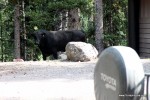
Cowboy Chris
Cowboy anarchist Cliven Bundy and Utah San Juan County Commissioner Phil Lyman remain free. I have been writing to Utah 2nd District Congressman Chris Stewart expressing my alarm at the situation. My point to Stewart is that if conservationist Tim DeChristopher goes straight to federal prison for violating BLM law, and is given a stiff two year sentence precisely because he is exercising his First Amendment right of free speech, then certainly these cowboys need some jail time for doing the same thing. Stewart, ever the right wing politician, doesn’t get it.
Stewart’s response:
I grew up on a dairy farm. My wife’s family still ranches in Northern Utah and Southern Idaho. I understand the importance of obeying the law, including paying grazing fees. Notwithstanding this, I was shocked as the situation played out in Nevada to see the show of force by the BLM and the National Park Service agents. I had no idea that these agencies had special tactical teams that appear more like paramilitary groups than park rangers.
It is true that America loves the cowboy. I increasingly do not. The fact that Stewart likes to wear his cowboy hat does not impress me. His sentence on the importance of obeying the law is his only acknowledgement of the issue in a full one page letter. The rest is about the citizens not respecting the federal government because it can’t be trusted. He has his facts all wrong. The BLM does not have paramilitary force. That level of force that showed up at Bunkerville was the Las Vegas Sheriff Department SWAT team. Ironically, Stewart is pressing the point in his letter to me that law enforcement ought to be local. He is ignoring the fact that it was. And the law was still outgunned by the cowboy militia and had to back off to avoid a blood bath. Overwhelming force, Stewart?

Rural cowboy militia
Subsequently, on May 10, Utah’s San Juan County Commissioner Phil Lyman led a heavily armed vigilante gang on ATV’s into Recapture Canyon, a sacred Navajo site in San Juan County that the BLM has closed to motorized vehicles. In part Lyman chose the anniversary date to publicly object to white, Mormon, San Juan County citizens not being allowed to continue to rob Navajo graves unmolested by the law. Sheriffs from five rural Utah counties showed up to make sure the heavily armed ATV riders were able to perform federal trespass without interference. They need not have worried. The unarmed conservation community was in reasonable fear for their lives and prudently did not show up. And, I sadly point out to you Chris Stewart, neither did the BLM.
Stewart is worried about an undue show of force. By whom, Chris?
In the West we do not practice equal justice under the law. Around Utah, if you are white, Republican, Mormon, wear a cowboy hat and are heavily armed you can break the law with impunity. You can even have the local sheriff, on horse and with hat, make way for you. On the contrary, if you interrupt the BLM in the name of conservation, without a hat and without a weapon, you go straight to prison with a maximum sentence. Such is the case today.
Happily there is a petition going around by the more sober citizens at Alliance for a Better Utah to hold the trespassers accountable. I am gratified to see I am not the only one alarmed at the cowboy behavior going unanswered by the law.
Like this:
Like Loading...















































































